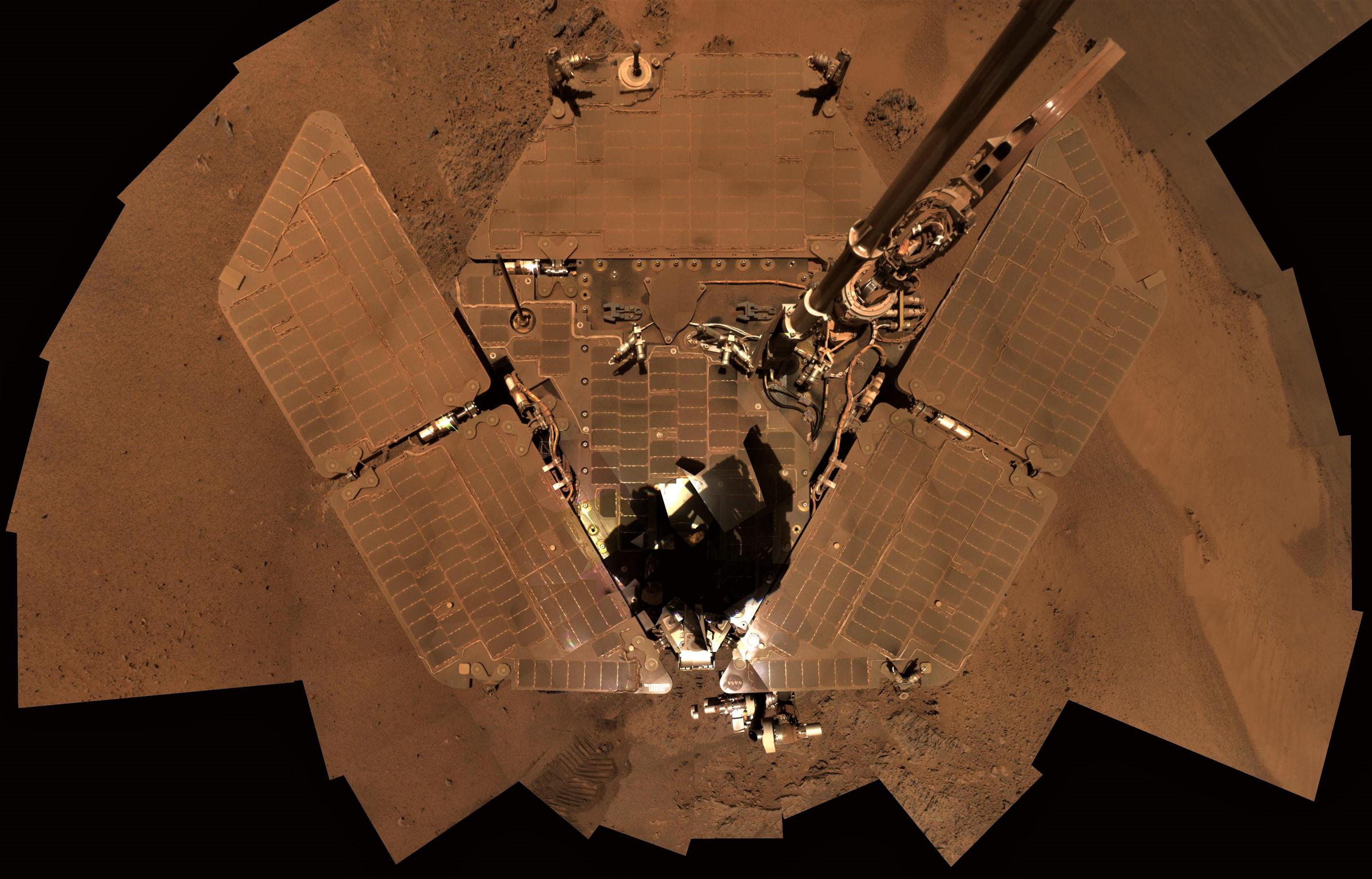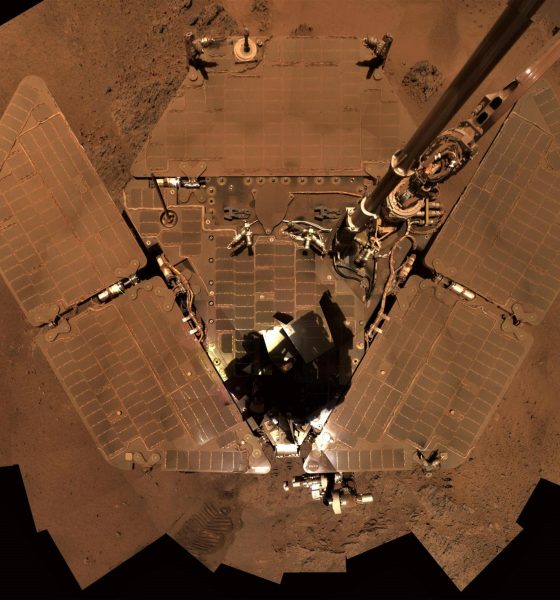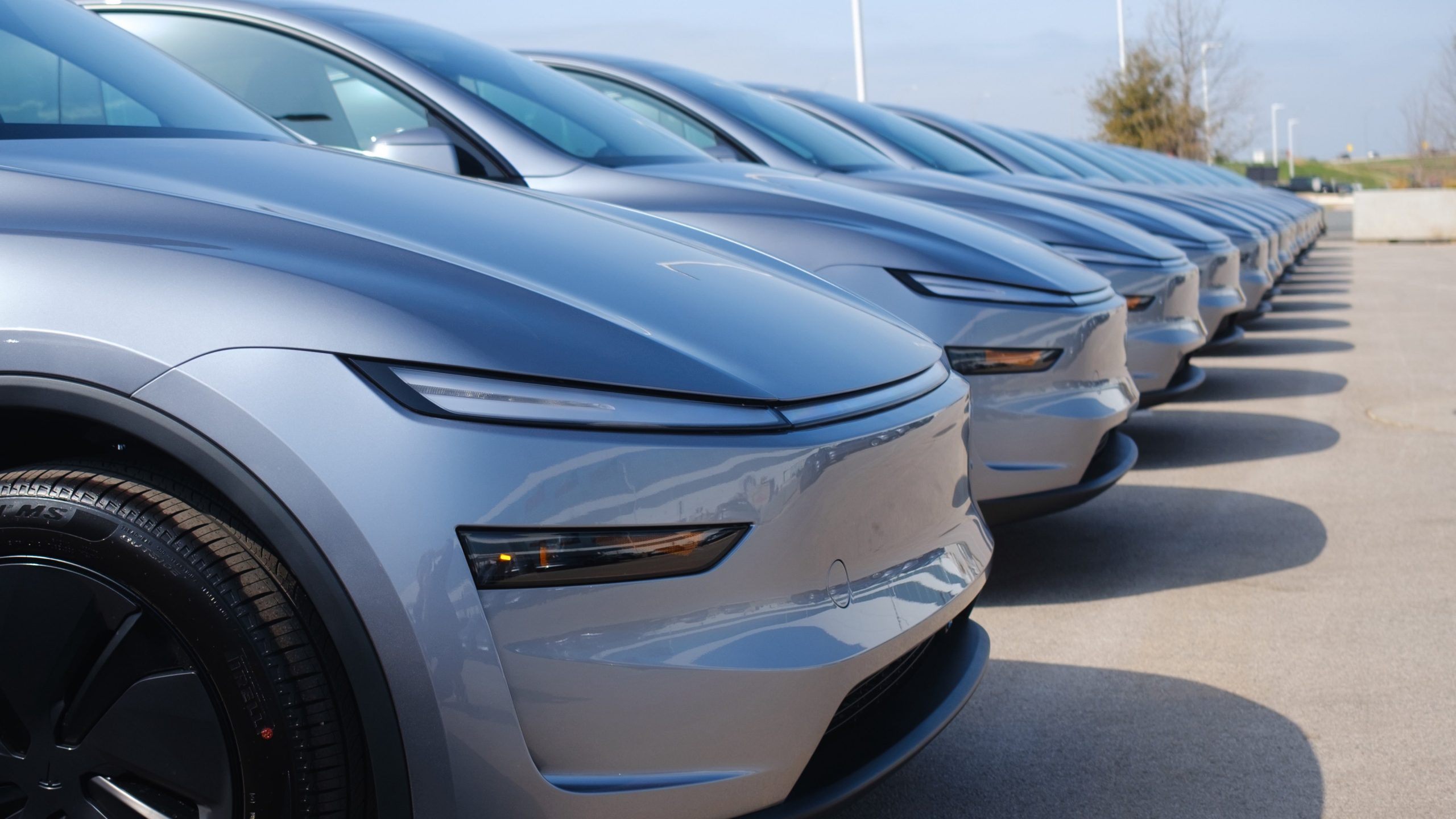

News
NASA may prematurely kill long-lived Mars rover with arbitrary wake-up deadline
In a decision with no obvious empirical explanation, JPL’s Opportunity Mars rover project manager John Callas was quoted in an August 30th press release saying that the NASA field center would be “forced to conclude” that the dust storm-stricken rover was effectively beyond saving if it fails to come back to life 45 days after 2018’s massive dust storm can be said to have officially ended.
Below the upbeat-sounding title of this press release is the scarier fact that after tau clears below 1.5, the rover has 45 days to wake up before NASA stops actively trying to revive it. Come on, #WakeUpOppy https://t.co/piCQLeaCEO
— Emily Lakdawalla (@elakdawalla) August 30, 2018
Over the course of that press release, Callas made a number of points that may technically hold at least a few grains of truth, but entirely fail to add up to any satisfactory explanation for the choices described therein. This is underscored in one critical and extended quote:
“If we do not hear back [from Opportunity] after 45 days, the team will be forced to conclude that the Sun-blocking dust and the Martian cold have conspired to cause some type of fault from which the rover will more than likely not recover. At that point, our active phase of reaching out to Opportunity will be at an end. However, in the unlikely chance that there is a large amount of dust sitting on the solar arrays that is blocking the Sun’s energy, we will continue passive listening efforts for several months.” – John Calwell, JPL
Scott Maxwell, a former JPL engineer who led drive planning for rovers Spirit and Opportunity, solidly explained the differences between active and passive recovery attempts:
Because it's a FAQ … "active listening" has two parts: (1) forcing Opportunity's radio, if she's listening, to a particular frequency (because it can drift), and (2) a command to talk to us. Pretty much guaranteed to work if she's awake with her radio on. https://t.co/iaHbHXFKqm
— 🇺🇦ScottMaxwell @marsroverdriver@deepspace.social (@marsroverdriver) August 31, 2018
The JPL press release offers exactly zero explanation for the “45-day” deadline, starting the moment that dust clears from Martian skies near Opportunity to a certain degree, likely to happen within the next few weeks. Nor does it explain why “active” recovery attempts would stop at that point, despite the fact that the PR happens to directly acknowledge the fact that the best time to attempt to actively restore contact Opportunity might be after Mars’ windy season is given a chance to blow accumulated dust off of the rover’s solar arrays.
In fact, while all points Callas/the press release makes may theoretically be valid, the experiences of the actual engineers that have been operating Opportunity and MER sister rover Spirit for nearly two decades suggest that his explanations are utterly shallow and fail even the most cursory comparison with real data.
Thanks largely to a number of comments collected by The Atlantic from past, present, and anonymous employees involved with Opportunity, it would seem that there is no truly empirical way to properly estimate the amount of dust that may or may not be on the rover’s solar arrays, no rational engineering-side explanation for the 45-day ultimatum, no clear excuse for how incredibly short that time-frame is, and essentially zero communication between whoever this decision originates from and the engineers tasked with operating and restoring communications with the forlorn, 15-year old rover.

Most tellingly, this exact impromptu dust-storm-triggered hibernation already occurred several times in the past, and even resulted in the demise of Opportunity’s sister rover Spirit in 2010. The Atlantic notes that when a dust storm forced that rover into hibernation in 2010, JPL mission engineers spent a full ten months actively attempting to resuscitate Spirit, followed by another five months of passive listening before the rescue effort was called off.
Given that Opportunity’s engineers appear to believe that there is every reason to expect that the rover can, has, and should survive 2018’s exceptional Martian dust storm, the only plausible explanation for the arbitrary countdown and potentially premature silencing of one of just two active rovers on Mars is purely political and financial. While it requires VERY little money to operate scientific spacecraft when compared with manufacturing and launch costs, the several millions of dollars needed to fund operations engineers and technicians (roughly $15 million per year for Opportunity) could technically be funneled elsewhere or the employees in question could be redirected to newer programs.
For example, the ~$200 million spent operating the rover from 2004 to 2018 could instead fund considerably less than 20% of the original cost of building and launching both Opportunity and Spirit. This is to say that that cutting operation of functioning spacecraft to save money can be quite fairly compared with throwing an iPhone in the trash because the charging cable ripped because $10 could instead be put towards buying a new phone months or years down the line.
Ultimately, all we can do is hope that Opportunity manages to successfully wake up over the course of the next two or three months. If the rover is unable to do so, chances are sadly high that it will be lost forever once active communications restoration efforts come to an end. With an extraordinarily productive 15 years of exploration nearly under its belt, Opportunity – originally designed with an expected lifespan of ~90 days – would leave behind a legacy that would fail to disappoint even the most ardent cynic. Still, if life may yet remain in the rover, every effort ought to be made to keep the intrepid craft alive.
For prompt updates, on-the-ground perspectives, and unique glimpses of SpaceX’s rocket recovery fleet check out our brand new LaunchPad and LandingZone newsletters!

News
Tesla Model Y gets hefty discounts and more in final sales push

Tesla Model Y configurations are getting hefty discounts and more benefits as the company is in the phase of its final sales push for the year.
Tesla is offering up to $1,500 off new Model Y Standard trims that are available in inventory in the United States. Additionally, Tesla is giving up to $2,000 off the Premium trims of the Model Y. There is also one free upgrade included, such as a paint color or interior color, at no additional charge.
NEWS: Tesla is now offering discounts of up to $1,500 off new Model Y Standard vehicles in U.S. inventory. Discounts of up to $2,000 are also being offered on Model Y Premiums.
These discounts are in addition to the one free upgrade you get (such as Diamond Black paint) on… pic.twitter.com/L0RMtjmtK0
— Sawyer Merritt (@SawyerMerritt) December 10, 2025
Tesla is hoping to bolster a relatively strong performance through the first three quarters of the year, with over 1.2 million cars delivered through the first three quarters.
This is about four percent under what the company reported through the same time period last year, as it was about 75,000 vehicles ahead in 2024.
However, Q3 was the company’s best quarterly performance of all time, and it surged because of the loss of the $7,500 EV tax credit, which was eliminated in September. The imminent removal of the credit led to many buyers flocking to Tesla showrooms to take advantage of the discount, which led to a strong quarter for the company.
2024 was the first year in the 2020s when Tesla did not experience a year-over-year delivery growth, as it saw a 1 percent slide from 2023. The previous years saw huge growth, with the biggest coming from 2020 to 2021, when Tesla had an 87 percent delivery growth.
This year, it is expected to be a second consecutive slide, with a drop of potentially 8 percent, if it manages to deliver 1.65 million cars, which is where Grok projects the automaker to end up.
Tesla will likely return to its annual growth rate in the coming years, but the focus is becoming less about delivery figures and more about autonomy, a major contributor to the company’s valuation. As AI continues to become more refined, Tesla will apply these principles to its Full Self-Driving efforts, as well as the Optimus humanoid robot project.
Will Tesla thrive without the EV tax credit? Five reasons why they might
These discounts should help incentivize some buyers to pull the trigger on a vehicle before the year ends. It will also be interesting to see if the adjusted EV tax credit rules, which allowed deliveries to occur after the September 30 cutoff date, along with these discounts, will have a positive impact.
News
Tesla FSD’s newest model is coming, and it sounds like ‘the last big piece of the puzzle’
“There’s a model that’s an order of magnitude larger that will be deployed in January or February 2026.”

Tesla Full Self-Driving’s newest model is coming very soon, and from what it sounds like, it could be “the last big piece of the puzzle,” as CEO Elon Musk said in late November.
During the xAI Hackathon on Tuesday, Musk was available for a Q&A session, where he revealed some details about Robotaxi and Tesla’s plans for removing Robotaxi Safety Monitors, and some information on a future FSD model.
While he said Full Self-Driving’s unsupervised capability is “pretty much solved,” and confirmed it will remove Safety Monitors in the next three weeks, questions about the company’s ability to give this FSD version to current owners came to mind.
Musk said a new FSD model is coming in about a month or two that will be an order-of-magnitude larger and will include more reasoning and reinforcement learning.
He said:
“There’s a model that’s an order of magnitude larger that will be deployed in January or February 2026. We’re gonna add a lot of reasoning and RL (reinforcement learning). To get to serious scale, Tesla will probably need to build a giant chip fab. To have a few hundred gigawatts of AI chips per year, I don’t see that capability coming online fast enough, so we will probably have to build a fab.”
NEWS: Elon Musk says FSD Unsupervised is “pretty much solved at this point” and that @Tesla will be launching Robotaxis with no safety monitors in about 3 weeks in Austin, Texas. He also teased a new FSD model is coming in about 1-2 months.
“We’re just going through validation… https://t.co/Msne72cgMB pic.twitter.com/i3wfKX3Z0r
— Sawyer Merritt (@SawyerMerritt) December 10, 2025
It rings back to late November when Musk said that v14.3 “is where the last big piece of the puzzle finally lands.”
With the advancements made through Full Self-Driving v14 and v14.2, there seems to be a greater confidence in solving self-driving completely. Musk has also personally said that driver monitoring has been more relaxed, and looking at your phone won’t prompt as many alerts in the latest v14.2.1.
This is another indication that Tesla is getting closer to allowing people to take their eyes off the road completely.
Along with the Robotaxi program’s success, there is evidence that Tesla could be close to solving FSD. However, it is not perfect. We’ve had our own complaints with FSD, and although we feel it is the best ADAS on the market, it is not, in its current form, able to perform everything needed on roads.
But it is close.
That’s why there is some legitimate belief that Tesla could be releasing a version capable of no supervision in the coming months.
All we can say is, we’ll see.
Investor's Corner
SpaceX IPO is coming, CEO Elon Musk confirms
However, it appears Musk is ready for SpaceX to go public, as Ars Technica Senior Space Editor Eric Berger wrote an op-ed that indicated he thought SpaceX would go public soon. Musk replied, basically confirming it.

Elon Musk confirmed through a post on X that a SpaceX initial public offering (IPO) is on the way after hinting at it several times earlier this year.
It also comes one day after Bloomberg reported that SpaceX was aiming for a valuation of $1.5 trillion, adding that it wanted to raise $30 billion.
Musk has been transparent for most of the year that he wanted to try to figure out a way to get Tesla shareholders to invest in SpaceX, giving them access to the stock.
He has also recognized the issues of having a public stock, like litigation exposure, quarterly reporting pressures, and other inconveniences.
However, it appears Musk is ready for SpaceX to go public, as Ars Technica Senior Space Editor Eric Berger wrote an op-ed that indicated he thought SpaceX would go public soon.
Musk replied, basically confirming it:
As usual, Eric is accurate
— Elon Musk (@elonmusk) December 10, 2025
Berger believes the IPO would help support the need for $30 billion or more in capital needed to fund AI integration projects, such as space-based data centers and lunar satellite factories. Musk confirmed recently that SpaceX “will be doing” data centers in orbit.
AI appears to be a “key part” of SpaceX getting to Musk, Berger also wrote. When writing about whether or not Optimus is a viable project and product for the company, he says that none of that matters. Musk thinks it is, and that’s all that matters.
It seems like Musk has certainly mulled something this big for a very long time, and the idea of taking SpaceX public is not just likely; it is necessary for the company to get to Mars.
The details of when SpaceX will finally hit that public status are not known. Many of the reports that came out over the past few days indicate it would happen in 2026, so sooner rather than later.
But there are a lot of things on Musk’s plate early next year, especially with Cybercab production, the potential launch of Unsupervised Full Self-Driving, and the Roadster unveiling, all planned for Q1.








